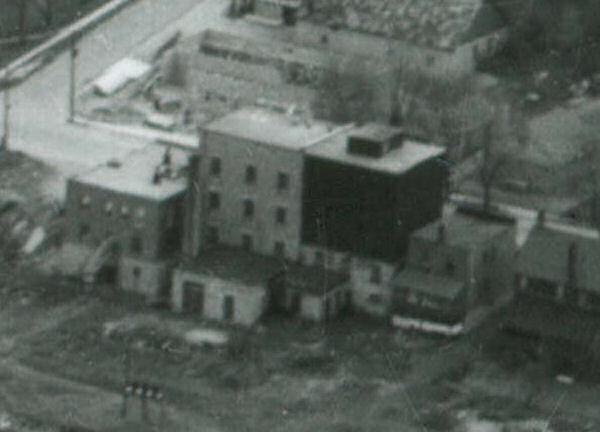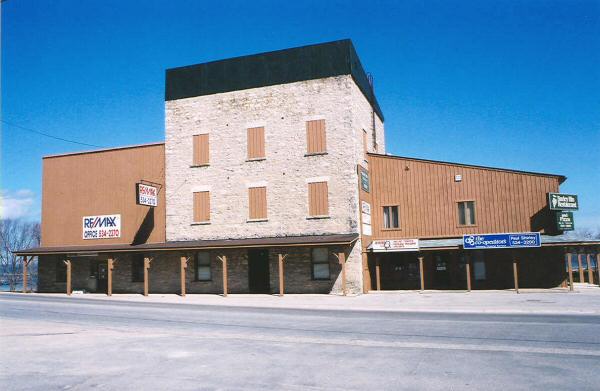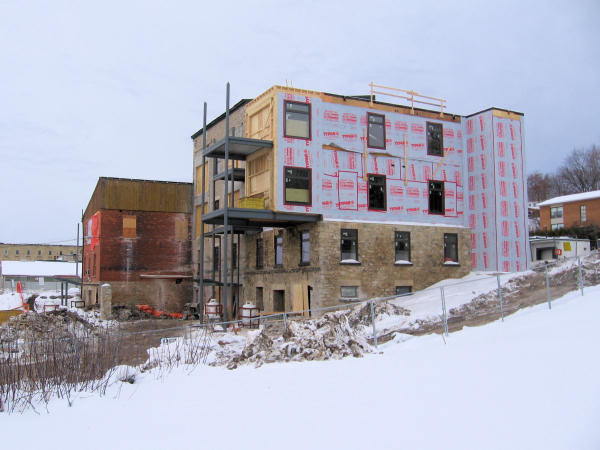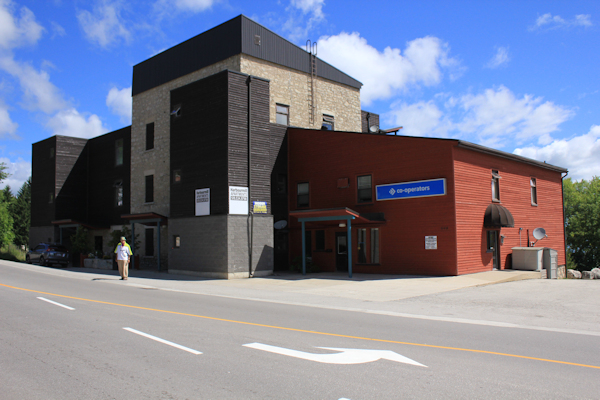- Recent Updates
- Colpoy's Bay
- Colpoy's Bay Introduction
- Spragge's Hill
- The Kalbfleisch House
- The Kalbfleisch Dock
- The Kalbfleisch Marina
- Whicher's Sawmill
- The Wrecks Near Whicher's Mill
- Frame's Falls and John Wood's Grist Mill
- Albemarle Street
- Hughenden and Whicher's Store
- The Community Hall
- The Forest Home Hotel
- The Colpoy's Bay Schoolhouse
- The Colpoy's Bay Church
- Edgehill Cemetery
- Colpoy's Bay From the Air
- A Glimpse of the Past
- Wiarton
- Berford Street
- Berford St. Part 2
- Berford St. Part 3
- Wiarton Harbour
- Bluewater Beach
- Caframo Ltd. and Wiarton Cement Works
- Wiarton Beet Sugar Factory
- Wiarton's Hotels
- Wiarton's Schools
- Wiarton's Banks
- Grand Trunk Railway Station
- The Wiarton Fish House
- The Wiarton Fish Hatchery
- Wiarton's Berford Theatre
- The Wiarton Woolen Mills
- Wiarton's Furniture Industry
- Wiarton's Hospital
- Wiarton's War Memorial
- Wiarton's Town Hall
- Wiarton's Newspapers
- Wiarton's Grist & Flour Mills
- Wiarton's Sawmill Industry
- Wiarton's Gateway
- Connecting Passages
(Links) - Present-day Map
of Colpoy's Bay - Colpoy's Bay
Lot Map (1870) 
Wiarton Timeline- Present-day Map
of Wiarton - Bibliography
- About the Author
- Site Map
(use if menu doesn't work) - Tell me your impressions!
Wiarton's Grist and Flour Mills
When one pictures the kitchen of an old pioneer home, it almost certainly includes homebaked bread from a fire-heated oven. So, it is no surprise that a key industry in the early development of any Ontario town was the local grist or flour mill. (Grist refers to the grain that is ground into flour.)
Water flowing down Frame's Falls provided enough power to run a small grist mill in nearby Colpoy's Bay village beginning in 1861, five years before Wiarton was founded. Since it had no waterfall of its own, fledgling Wiarton required the use of a steam engine to power its first grist mill. Built in 1876 by W H Heberden, the mill was located on the shore of Colpoy's Bay (extending out into the water), just south of the main wharf. This area would be occupied later by Gideon Kastner's long-running sawmill. Today it has been incorporated into the Wiarton Marina. Unfortunately, I have yet to find any photographic record of this original grist mill.
By 1879 James A. Peterson had assumed control of the mill, advertising it as the "Wiarton Steam Grist and Flouring Mill." Mr. Peterson had larger plans however. In January of 1881 he sold the mill to a Mr. N Schwalen with the intention of building a new, larger facility. However, it appears that Mr. Peterson could not convince the village council to award him a tax exemption (a common incentive for establishing a business in those days), so his plans for a new grist mill were scrapped.
Over the next few years the original mill passed through a few hands. In November of 1881, M. Crawford and W.J. Sutton leased the mill, with Crawford assuming sole control the following February. In March of 1883, the Echo newspaper reported that Crawford was considering leaving town. It appears he did just that, and with no one interested in taking over the reigns, the grist mill sat unused until September 1884 when two men by the name of Chester and McAlpine re-opened the business. Nevertheless, with Wiarton's population exploding, the Echo newspaper called for the establishment of a new, first-class grist mill.
In March of 1885, John Ashcroft made some improvements to the old mill and assumed control of its operation. Only a few months later, however, Mr. John Irwin began construction on a new mill not too far away. Located north of Division Street about half way between Berford St. and the shoreline (just west of the railway track), the new mill began operation in September 1885. Irwin's mill was of the "roller" variety, meaning that grist was effectively crushed between two steel rollers. This stood in contrast to the older method of grinding grain between two round mill stones (See information on Wood's Grist Mill in the Colpoy's Bay section of this site.). Upon it's opening, the new $11 000 (about half a million dollars today) Wiarton Roller Mill was said to have a capacity of 80-100 barrels of flour a day. Two or three different grades of flour could be produced using six machines with 2 steel rollers each to refine the grist.
Despite the successful establishment of the roller mill, it alone could not keep up with area demand. To that end, John Ashcroft continued to operate the original grist mill on the shore (sometimes referred to as the stone grist mill, presumably due to the mill stones), leasing it out to H.J. Comer in September of 1886 and then D.A. Kent in January of 1887. In November of 1889, the old grist mill was the victim of an arson attempt, but suffered minimal damage in the end. However, it appears that the old mill fell into disuse at about this time. Ultimately, it was purchased by J.T. Crawford in December of 1891, then disassembled the following August and rebuilt behind the Arlington Hotel for use as a livery (i.e., a place rent out horses and carriages).
Meanwhile, John Irwin made a few minor additions to his roller mill which continued to do strong business, at least until the summer of 1894 when the mill was shut down. Mr. Irwin raised the prospect of closing the mill altogether due to the general economic depression of the times. The newspaper noted, however, that this left local demand having to be shipped into town. In any event, Irwin had the mill up and running again by the end of the year, although a significant portion of business continued to be lost to out-of-town sources.
In September of 1895, James Hunter signed on to lease the roller mill with a renewed effort to win back business. I assume he was successful to some extent. Nevertheless, after three years the operation was transferred back to the control of John Irwin who ran the roller mill until the end of its days...which came early in the morning of Wednesday, February 6, 1901. Shortly after midnight Wednesday morning, a fire began near the front door of the mill and ended in the mill's destruction. A couple weeks later, Irwin put the lot up for sale, along with the surviving storehouse, 45 horsepower engine and boiler. Figure W21A shows Irwin's roller grist mill as it stood late in its life, about 1899.

Figure W21A: John Irwin's roller grist mill at centre left (1899)
Left without a grist mill, it didn't take long for one of the town's citizens to step forward and propose a new and improved establishment. By August, Charles Reckin (pronounced Rekeen) offered to build a new mill in exchange for a 10-year town tax exemption. In the end, Reckin was granted a 10-year partial tax exemption, and despite hoping to build directly on the northeast corner of Berford and Division Streets, purchased the land one lot north of the corner lot.
Although Reckin's mill would provide only a slight improvement over the power and productive capacity of Irwin's mill, it would be housed in a much more dramatic structure. As opposed to the wood frame construction of Irwin's mill, Reckin's mill was built of limestone taken from a local quarry. The overall building measured an impressive 40 by 80 feet and four storeys high (three visible from Berford Street, four from the rear). The southern portion of the building (the mill itself) had a frontage of 45 feet and exterior limestone walls. The northern part of the building (the elevator) had a frontage of 35 feet and although the first floor had exterior limestone walls, the upper three floors were covered in wood planks 6 to 8 inches thick. Construction of the mill was completed in only six months, with the production commencing at the end of September 1902. Figure W21B shows an engraving published in the Wiarton Echo of Reckin's new grist mill upon its opening. The following year, Reckin also built a three-storey red-brick store next door to the mill on the south side.

Figure W21B: Engraving of Charles Reckin's new grist mill (1902)
The Wiarton Flour Mills operated successfully under two generations of the Reckin family until 1943/4. By 1945/6 the mill had been sold to Bernice Tyson who provided feed, chopping and fuel services. The Wiarton District Co-operative was established in 1946 and appears to have taken over ownership of the mill by 1948, advertising "flour, feed, grain, seeds, custom chopping, hardware, electrical equipment and farm supplies." Figure W21C gives two perspectives of the mill, one from its prime in about 1905 and another, from the rear, in 1949. Note some of the surrounding buildings, including the store built by Charles Reckin on the south side of the mill, the smaller building on the north side and the tenement house next door to the north.


Figure W21C: Wiarton Flour Mills and Wiarton District Co-operative mill (c. 1905 and 1949, respectively)
Under the oversight of the Co-op, the mill underwent its first major change in appearance. By the 1960s, the elevator (northern) portion of the mill was reduced in height by one floor and given a slanted roof (presumably to help reduce snow accumulation). It also appears that all buildings (three storey store and tenement house next door) to the north of the main mill structure were demolished about 1968, when the uphill grade of Berford Street was lowered. Figure W21D gives a view of the mill building during this period (1968).

Figure W21D: Wiarton District Co-operative Feed Mill (1968)
The Co-op continued to run its operations exclusively out of the mill building (699 Berford St.) until 1974 when the office was shifted across Division St. to occupy the former machine shop of Duncan Sinclair (681 Berford St.), on the lot where the Ely House (Commercial Hotel) once stood. Although the office had moved, the Co-op, renamed the Wiarton Branch of the United Co-operatives of Ontario in 1976, continued to own and operate the former Reckin mill until 1983/4 when all Co-op operations were moved to 681 Berford St. where they remain to this day.

Figure W21E: The Co-operative fuel tanks behind the former grist mill. (1984)
Thanks in part to a government grant, the former Reckin mill underwent a major $100 000 renovation in 1985 to prepare it for use as a restaurant and office space. Most noticeably from the exterior, most of the boiler room at the rear of the building, with accompanying smokestack, was removed and replaced by an indoor dining area. Also, the red-brick building constructed by Reckin to the south of the mill was covered in wood paneling at the front, and given a slanted roof. The Co-op fuel tanks behind the building were also removed at this time (see Figure W21E above).
Although early reports referred to the upcoming restaraunt as "Village in the Mill", it debuted as the Barley Bin Restaurant in 1986. Housed on the first floor of the building, the Barley Bin highlighted the history of the grist mill by featuring a vintage newspaper article on the front of the menu. The article, taken from the Wiarton Echo's October 16, 1902 issue, described the features of Charles Reckin's new mill upon its opening.
After nearly 20 years of operation, the Barley Bin restaurant closed its doors in the winter of 2004. For a short while in 2006 and 2007, this historic space was taken up by the "Rocky Raccoon Cafe" which also had locations in nearby Dyer's Bay and Gore Bay. Figure W21F below shows two images of the former grist mill following the closure of the Barley Bin restaurant, prior to the opening of Rocky Raccoon Cafe. (Note that the Barley Bin signs are still present.)


Figure W21F: Former Wiarton Flour Mills following the closure of the Barley Bin Restaurant. (2005)
In August of 2009, work began on major renovations to Reckin's former flour mills. No longer would the building serve as a restaurant. Although some commercial space would remain, the building would be converted for residential use, with seven two-bedroom apartments, four one-bedroom apartments and three retail units. Despite this significant change in usage, the plans were drawn up to retain as much of the original stonework as possible.



Figure W21G: Southwest view of former Wiarton Flour Mills under conversion to a housing complex with illustration of completed shoreside facade. (August 2009, December 2009)
The top image of Figure 21G shows a southwestern view of the former Reckin grist mill amidst the initial stages of reconstruction in August 2009. At the time, all the wooden portions of the building had been removed, leaving only the original limestone building and the adjoining red-brick building to the south. Note in the topmost image the remaining portions of the original boiler room extending left from the main limestone building. By December 2009, most of the boiler-room remains had been demolished, additional living space had been added to the north and western portions of the building, and many of the windows had been replaced and/or expanded. The bottom image of Figure 21G shows an artist's illustration of the completed shoreside (eastern) facade.


Figure W21H: Northeast view of former Wiarton Flour Mills from Berford St., amidst conversion to a housing complex. (2009, 2023)
Figure W21H presents a view of the former Reckin mill looking northeast from Berford St. during the building's transformation into a housing complex and the same perspective in 2023. While the redevelopment gives the building a new modern look and has changed both the west and east facades considerably, the heart of the building remains and one can still imagine the sound of steam engines and belts humming inside, producing local flour for Wiarton's early citizens.
Indeed, the next time you're at your local grocery store, picking up some flour, perhaps the Wiarton grist mill will come to mind, reminding you of those days long ago...when the scene of a typical household kitchen would include a fresh-baked loaf of bread made with flour from the local mill.

